I have a great number of interesting things sat on my desk that have arrived in the last few months. I thought I would share some of them with you.
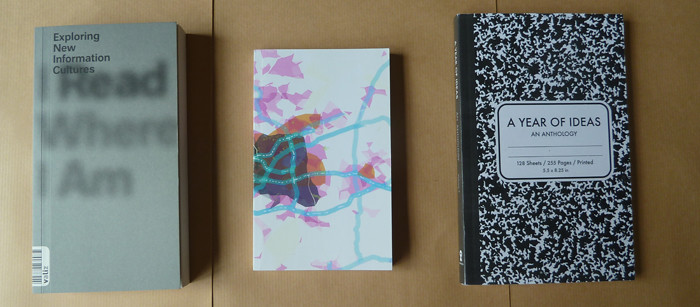
I’ve mentioned I Read Where I Am before, but it’s worth pointing out that it’s an object as well, and a very well designed one at that. Compiled by Mieke Gerritzen, Geert Lovink and Minke Kampman from the Graphic Design Museum, Breda, and the Institute of Network Cultures, Amsterdam, it features 82 short essays on future forms of reading (including a very short one by me). You can read many of the essays online at www.ireadwhereiam.com.
Blaine Cook and Maureen Evans made some fieldnotes for SXSW 2011 in the manner of my 2010 Fieldnotes. They contain much of the same useful information, including schedules, maps, daily planners and blank note pages, as well some insider info I didn’t have, like Austin’s best barbecue and breakfast joints. Also: they’re bound in Prettymaps.
Christopher Butler, of Newfangled, created his own yearbook of 29 favourite articles from the year. In particular, he was pleased enough with the design and layout to print some for friends, turning it into a “mixbook”, like a mixtape, of things liked and shared. You can read more about the process and what’s in the book in his write-up of the project. Printed self-curation is a thing now—witness Newspaper Club’s Telepaper, and expect to see much more of this sort of thing.
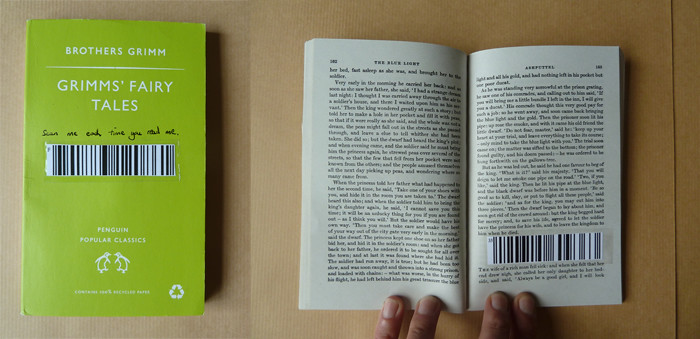
The lovely folks at For Love Not Money sent me one of their doctored copies of Grimm’s Fairy Tales as part of their Book Club Everywhere project. They’re using Stickybits to collate annotations on the text. Barcodes in each chapter allow readers to scan their paper book, logging their notes, location and repeat visits.
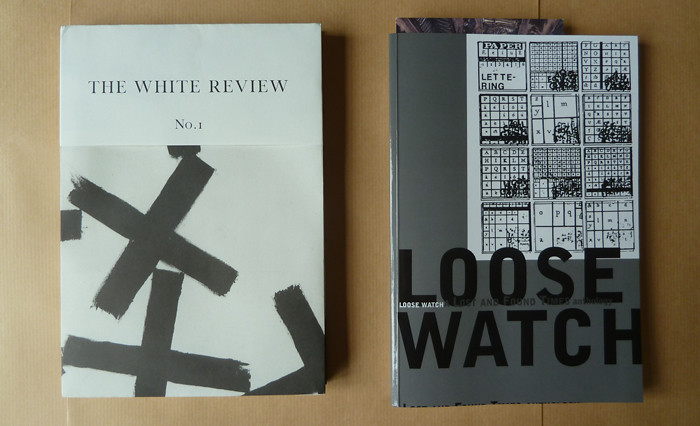
A couple of fantastic literary publications, one old, one (quite) new. The White Review is a fine new journal featuring writers and visual artists. It takes its name and a degree of inspiration from La Revue Blanche, a Parisian magazine which ran from 1899 to 1903, and I can’t recommend it enough. The website also features fiction extracts, poems and artworks from the magazine (I’ve been fascinated by the Dreamachine for years, so this purchase was a no-brainer). Issue 2 is out now.
From Bridget Penney, author of Index, one of my favourite novels of recent years, a copy of Loose Watch, an anthology drawn from the semi-legendary Lost and Found Times. L&FT was an artist-led publication which ran for 54 issues between 1975 and 2005, beginning with mail art and encompassing international experimental literature and radical poetry. It’s quite something, and kudos to Invisible Books for their dedicated work supporting and propagating marginalised work.
(A sidenote: I would love to create a library dedicated to small and radical publishers, along the lines of the Prelinger Library (Wikipedia). I think private libraries are a good and necessary future thing; much of this work will not be digitised any time soon; it still requires archiving and curation.)
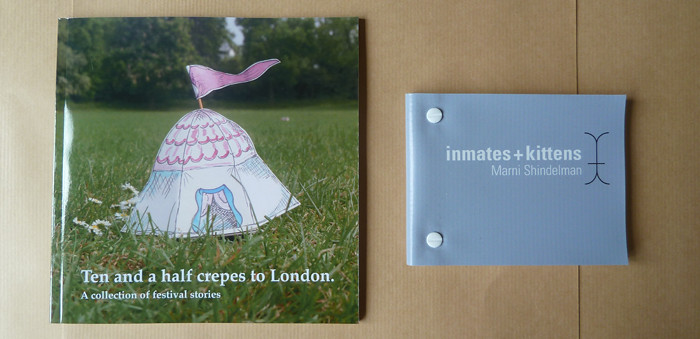
Two self-published books, with different approaches. Anne Holiday’s Ten and a half crepes to London contains twelves stories blending fact and fiction about festivals. It’s beautifully written and designed, and printed via Lulu, where you can buy it. Anne is also part of the We Are Words + Pictures collective who make Paper Science and get people writing and drawing among many other things. They’ve currently got an exhibition on at Bookart Bookshop in Hoxton.
Marni Shindelman’s inmates + kittens is a handmade book bound in vinyl, records 117 days of the author’s Google searches, forming “a self-portrait of the language meant to mine the internet”. What emerges is just that, a record of the author’s changing concerns and doings. This is more amusing than it sounds; it is frequently hilarious in fact, schizophrenic, wandering, and strangely, cuttingly honest.
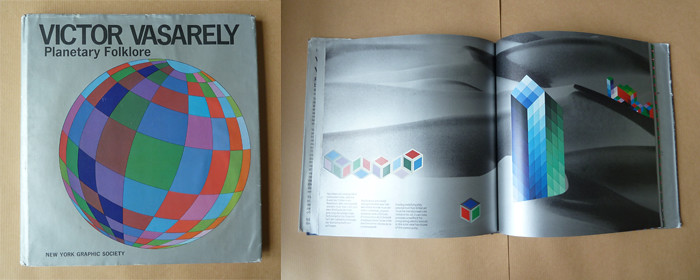
Finally, Aaron sent me a monograph of the work of Victor Vasarely, which belonged to his father, published by the New York Graphic Society. Vasarely was one of the founders, even precursors, of Op Art, and you can see much of his work on his official site. There’s clearly a strong line from the Op Art of the 60s and 70s to the pixel art that figures strongly in the New Aesthetic—indeed, Vasarely’s “Gestalt” works of the late 70s could be contemporary illustrations—and it will be worth digging into these parallel visions, a psychedelic utopianism connecting the aesthetics of the digital world just as Stewart Brand’s hippy Whole Earth Catalogue inspired the founders of Silicon Valley.
That’s it. I like books. What else is there?
Comments are closed. Feel free to email if you have something to say, or leave a trackback from your own site.